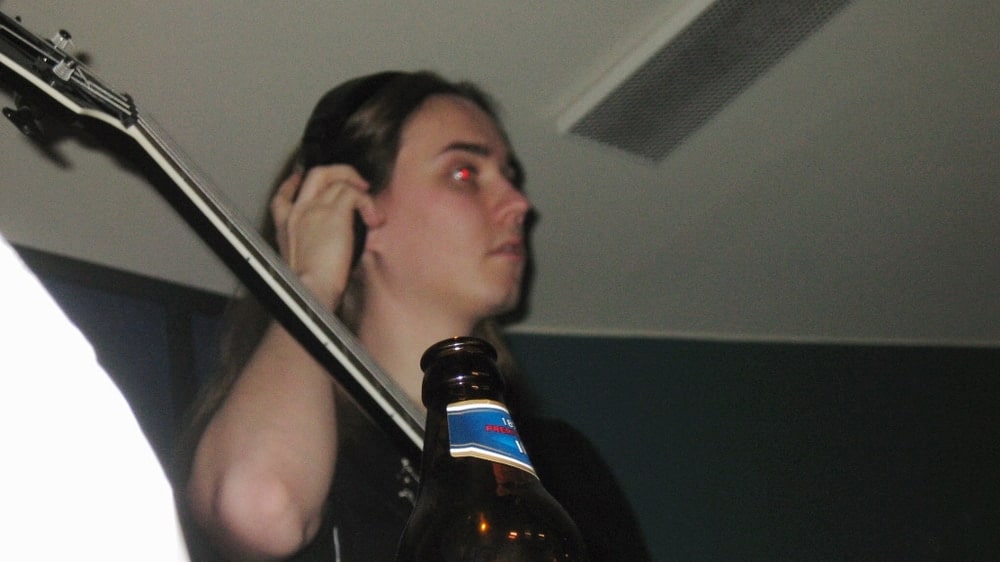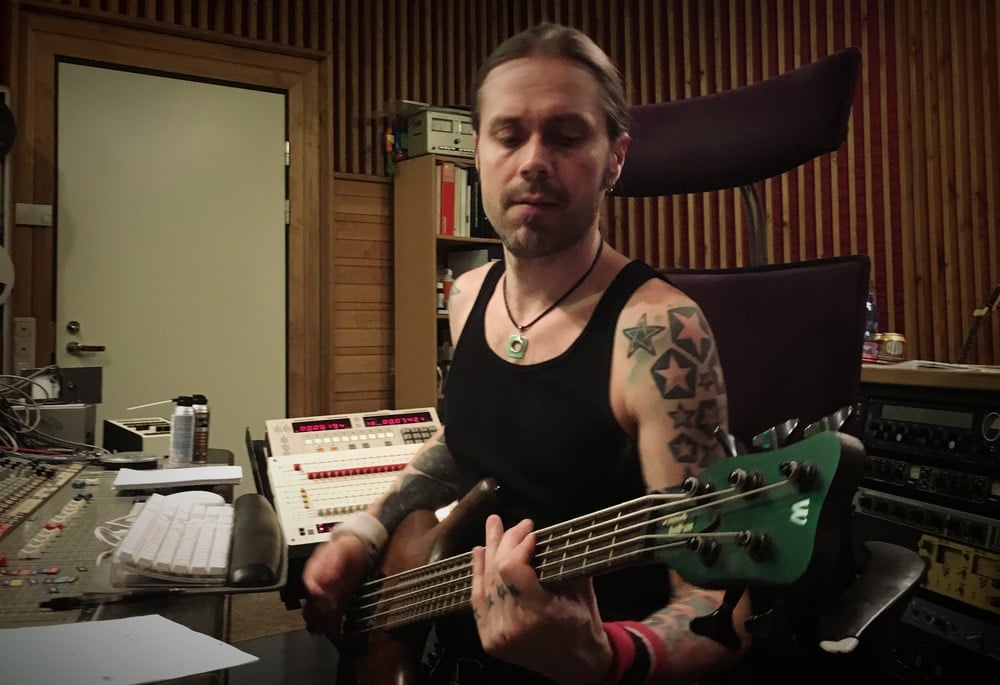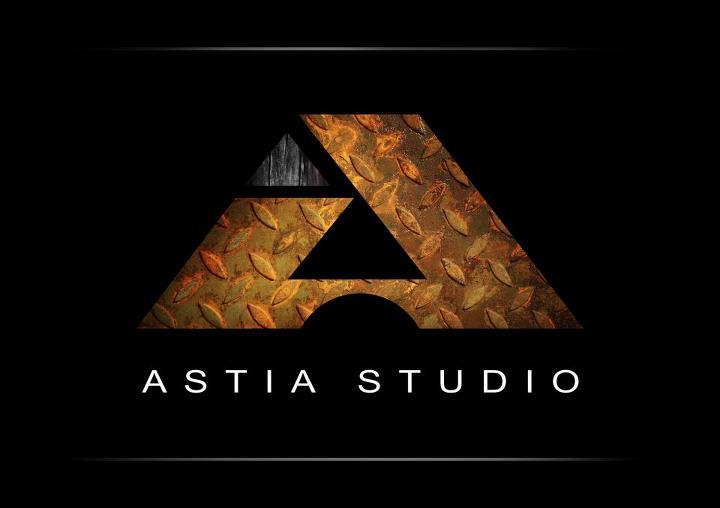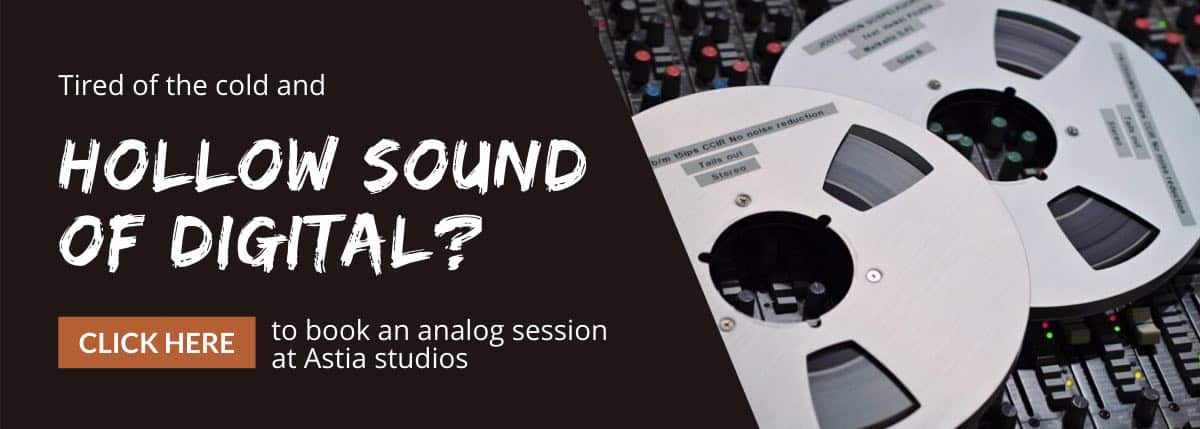This Simple Tip Will Improve How Your Band Sounds Both Live And In The Studio
The guitar player is usually responsible not only for the riffs but also the composition. The bass player diligently learns the riffs and plays the parts according to both the guitar and the bass drum patterns. Did you know that it is one of the reasons that makes your music sound not so good? This simple tip will improve how your band sounds both live and in the studio. You do not only improve how tight your playing sounds but will also improve the sound in general. For the past 20 years I have used this method on most of the sessions and now want to share it with you.
This blog post will help the bass player, guitarist, drummer and recording engineer.
This Simple Tip Will Improve How Your Band Sounds Both Live And In The Studio
I want to help you improve the rhythmic accuracy with this simple tip that I found highly useful back in the 90’s. On numerous albums I have used it successfully and almost everyone who I’ve shared it with continues to use it.
Once the technical metal started to rear its ugly metal head, the parts became a lot more challenging. Difficult rhythmic patterns needed to be played super tight among all string instruments. Usually this was challenging especially for the bass player.
It’s pretty common to have the bass follow not only the guitar but also the bass drum. When the double bass drum part starts, nearly all bass players struggle to keep up with the bass drum. But did you know that this will cause a surprising result that will not only make the bass sound worse but also makes the drummer sound like he’s playing sloppy?

The problem that the fast bass pattern creates
The distorted bass sound is pretty widely used in both rock and metal genres. Some use just a mild distortion and some a lot lot more.
Have you ever wondered why drums and guitars sound tight together but once the bass player joins in with those 16th notes the tightness is gone? This is not necessarily the bass player’s fault as sometimes it’s caused by the laws of physics. Once the bass pattern is fast enough the low frequencies don’t have enough time to come alive. And instead of huge and beefy you’ll end up with a thin and crackling sound. It is this “crackling” that will make it sound like the drummer is playing not that accurate.
When your bass pattern is too fast, the overall sound gets thin and makes your music sound less tightly played.
This is how a fast bass pattern affects the sound and tightness:
- The low frequencies of the bass guitar have no time to come alive making the overall sound thin
- When you use distortion the bass sounds like it’s “crackling” i.e. without the low frequencies we only hear the high distorted sound of the pick hitting the string
- This crackling sound makes the bass drum and guitar sound sloppy

How changing the bass pattern can improve the sound
As I started noticing this phenomenon on almost every session I started suggesting that during the fast part the bass would play only every 2nd or even every 4th note only. Oh yes indeed, for example during the tatatata bass drum pattern the bass would only play two or just one long note.
Even though you might find this tip weird, I warmly recommend you to try it out. When listening to the new half-feel pattern with all the instruments it sounds like the bass is still playing identically with both the guitar and bass drum. Yet, the unwanted crackling is gone and the low frequencies are still present.
We have successfully used this method with Children Of Bodom on several albums, Impaled Nazarene, on two Ensiferum albums, several albums with Norther and countless others. You can hear this tip being used on many of the albums that I’ve done. Then on the other hand you might not be able to literally hear it as the bass sounds like it’s playing exactly as the guitar and the bass drum, yet the reality is something completely different.
I highly recommend you to try this tip at the rehearsal, live show and in studio. If at studio you are listening only the drums and bass without any other instruments, it doesn’t sound that great. Add all instruments and then it definitely works and can improve both the sound and tightness significantly.
Please keep in mind that these tips might not work on every situation and riff. As always there are exceptions. When it comes to music and playing, you should always use your ears and listen to how things sound.
The order in which you should record the instruments
For years I have recommended when recording technical metal that after drums you should continue with rhythm guitars. Once they are completed, it’s time to record the bass. This helps you to test my tip and you will hear the effect much easier.
As the guitar player usually composes most of the riffs, I’ve noticed that recording the rhythm guitars first will reduce the amount of additional work. When you record the bass to both the drums and guitars it’s much easier to spot the wrong notes and patterns. This way of bass recording has sometimes lead us towards a lot more interesting bass lines improving the result by taking the song to the next level.
How about if you’d try to “catch” the vocal pattern rhythmically or even follow the vocal melody on a specific part with the bass?

Let’s recap my tips on how to improve how your band sounds:
- The bass player doesn’t have to double the fast guitar and bass drum patterns note to note
- Keep the bass parts as quarter and 8th notes to keep the sound bigger with more low frequencies
- Playing patterns in half feel or even less reduces the unwanted crackling improving accuracy
- When recording all instruments separately, track the bass after completing the rhythm guitars
Thank you for reading my tip on how to improve how your band sounds by using the fewer bass pattern. If this post was helpful, please share it on social media. This way you will help your friends to benefit from the information.
To hear your bass in great detail reserve a full analog tape recording session with me at Astia-studio by clicking here. Thank you very much and all the very best!
Read more bass related blog posts:
Astia-studio is a full analog recording studio located in eastern Finland with 25 years of experience. Bands and artists from all over the world including USA and the furthest corner of Russia, Vladivostok have arrived to us for tape recording sessions.



